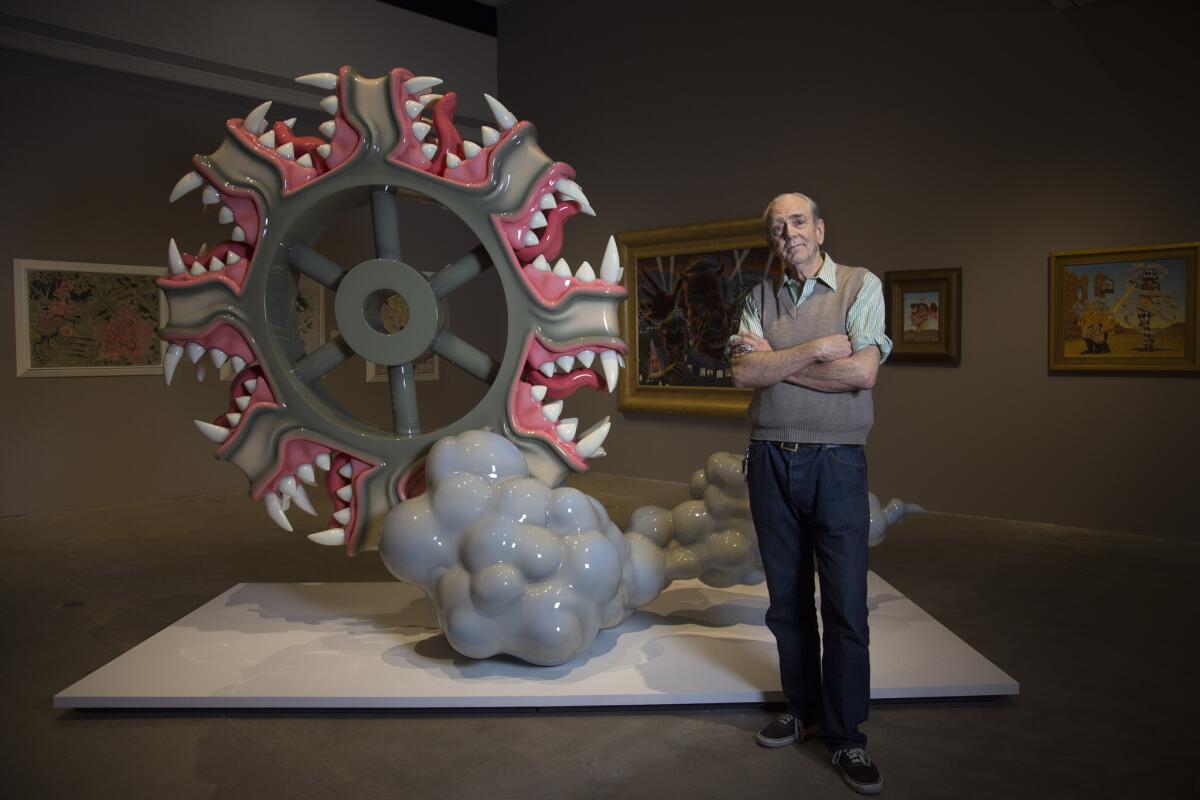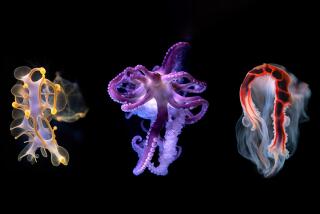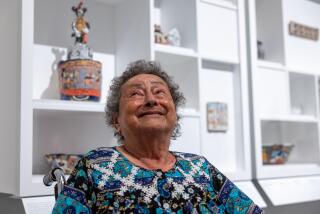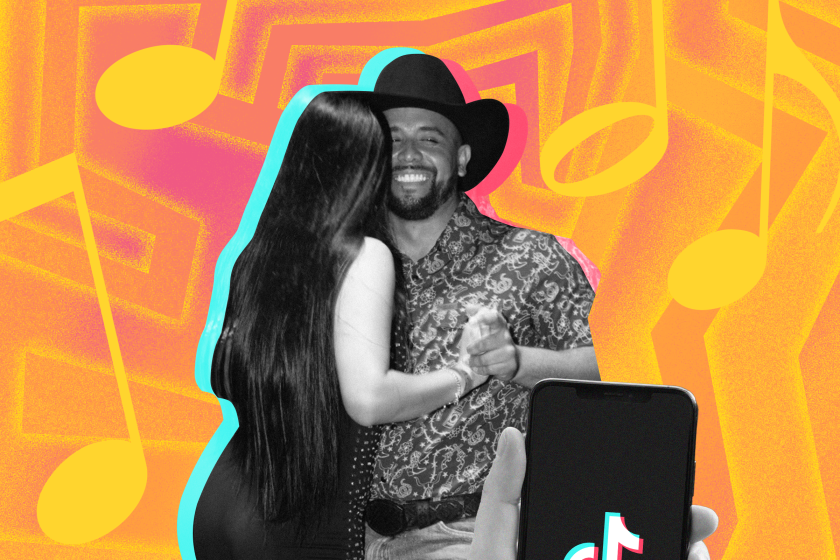A life inspired by hot rods and comics: Robert Williams comes full circle

In 1964, an exhibition of work by Spanish surrealist Salvador Dalí went on display at the Los Angeles Municipal Gallery at what was then known simply as Barnsdall Park. The show contained nearly 50 Dalí pieces from collections all over the U.S. and Europe, from the 1936 canvas “Soft Construction with Boiled Beans (Premonition of Civil War),” full of contorted body parts, to “The Apocalypse,” a little-seen artist’s edition of the Bible’s Book of Revelation.
For a budding, 21-year-old artist by the name of Robert Williams, the show was a mind-blower. “It was the first time I saw Dalí’s paintings in person,” he recalls. “And it really humbled me. I realized I had a long way to go.”
Well, Williams, now 72, has definitely come a long way.
The long-time Los Angeles painter has had a lasting and storied career. In the ‘60s, he worked as an art director for legendary custom car builder Ed “Big Daddy” Roth. In the ‘70s, he hung with the Zap Comix crowd up in the Bay Area, producing alternative cartoons with the likes of Robert Crumb and Manuel “Spain” Rodriguez. The following decade, his painting, “Appetite for Destruction,” which showed a robot figure wreaking violence, served as the notorious cover of a Guns N’ Roses album of the same name. And in the early ‘90s, he helped launch the underground art magazine Juxtapoz, which remains in publication to this day.
Throughout, he has painted — bright, pulsing, intensely detailed canvases and watercolors that riff on his love of comics, pinups, hot rods, the grotesque and the surreal. In fact, he is widely regarded as the august elder statesman of so-called Lowbrow, a style of art that draws inspiration from underground culture such as alternative comics, car culture, psychedelia, graffiti and tattoo art.
Now, more than 50 years after he first set foot in the Municipal Art Gallery, he will have an exhibition there of his own. “Robert Williams: Slang Aesthetics” is a survey of the artist’s recent work, with more than 84 pieces, including painting, water colors, concept sketches, drawings, prints and some cartoonishly insane looking sculptures. Among them: a 9-foot fiberglass piece from 2013 titled “The Rapacious Wheel,” a circular arrangement of bared teeth that looks like a combination of a Mayan totem and Wile E. Coyote’s worst nightmare.
“All my work has an off-the-wall language,” he says, as he walks through the galleries in the midst of frenzied installation before the Sunday opening. “I just got to a point in my career where I realized I liked cartoons and brushed off any affectation of sophistication. Cartoons and skateboarding and tattoos and psychedelic art — they are all the things that make life rich.”
Williams was born in Albuquerque, and as a youth divided his time between New Mexico and Alabama, where his father grew up. (In fact, to this day he retains a hint of languid, Southern drawl.) He says he was born drawing: “When I was a baby, my parents would put me on a piece of butcher paper with a crayon.”
When it came time to study art, he couldn’t think of any place he’d rather be than California — land of sleek cars, bikini babes and B-movie monsters. For a time, he attended L.A. City College, and later the Chouinard Art Institute (which became CalArts). But he never completed his studies.
“I come out to California with these wild notions about comics and girlie mags and hot rods and find myself right in the middle of Abstract Expressionism,” he says. “Drawing was practically forbidden in art schools. It was all, ‘Use the shoulder, not the wrist.’ I have an appreciation for it, but it’s a limited language.”
A fateful trip to the unemployment office in 1965, however, pointed Williams towards an opening at Roth’s custom car studio. “All of a sudden,” he recalls, “I’m making money — I have a following.”
He remained there until 1970, when Roth lost his assets in an ill-fated magazine venture and was forced to close the shop and sell his cars. Williams says that in the buying frenzy, he sold a number of his works to a collector in the San Fernando Valley. Those funds set him for the next chapter: Zap Comix.
“I was one of the early artists at Zap,” he says with a grin, “spreading the poison.”
Throughout this period, he steadily painted — often waking at four in the morning to do so. Williams has always been a fan of painting: High Renaissance, French Rococo, late Gothic. He says one of his favorite works is Théodore Géricault’s 19th century masterpiece “The Raft of the Medusa,” which dramatically depicts a raft of shipwreck survivors at sea.
But the artist’s trademark style can best be described as a blend of the surrealism championed by figures such as Dalí and others infused with the language of comics. Many of Williams’ smaller works, in fact, feature the barren landscapes favored by the surrealists. But his bigger pieces read like the border-less splash panel of a comic book, with all kinds of outrageous action coming at the viewer from many different depths. Think: a naked woman standing on a motorcycle having an airborne gun battle with cowboys and Indians as she sails over an urban cityscape.
These pieces can touch on the real (the singer Debbie Harry or the jet-setting Egyptian King Farouk) as much as they do on the invented (a wild assortment of eyeball-popping cartoon characters, robots and monsters). He often bends space and time, so that a single figure inhabits multiple landscapes at once.
“I’m a science fiction fan, but also an amateur cosmologist,” he says. “That’s my closest thing to religion.”
Despite the aching detail so often seen in his work, Williams for years received the cold shoulder from the art establishment, which was going through a minimalist-conceptual phase in the ‘70s. “I didn’t have any peers,” says Williams.
In the ‘80s, Williams took to displaying his work at nightclubs and underground spaces. For years, he showed at the Zero One Gallery (which had various locations and in its early days served as the inner sanctum for punk rock royalty).
“It was like the Weimar Republic,” Williams says of the space with fondness. “Everyone was really open and there was art and music and drugs and women.”
The artist started getting write-ups in punk and tattoo magazines. It was during an interview with a young writer for one of these that he set on the idea of creating a magazine that would cover the type of art he and his colleagues were making — art that wasn’t getting much attention from the general art press.
For a time, he helped produce a short-lived publication called Art Alternatives. But, in 1994, along with figures such as the writer, photographer and street artist Craig Stecyk and Thrasher magazine publisher Fausto Vitello, he helped bring Juxtapoz into the world — the house organ of the Lowbrow movement. “It was,” he says, “a hit out of the gate.”
The magazine has inspired a whole generation of artists obsessed with exploring the dark corners of popular culture. (In conjunction with Williams’ exhibition at the L.A. Municipal Art Gallery, a smaller, separate show will track the influence of Williams and 20 years of Juxtapoz magazine on a generation of contemporary artists.)
For the record: Williams isn’t wild about the term “Lowbrow.” But it stuck after the publication in 1979 of his first book, “The Lowbrow Art of Robert Williams.”
“Pop surrealism also isn’t very good,” he says, of the alternate classification that is often used. “I prefer the term ‘feral art.’ It’s had to raise itself out in the wilderness.”
Whatever it’s called, Williams and his art are born of a uniquely California confluence of cultural phenomena: car culture, alternative comics, skateboarding, animation, pornography and the entertainment industry. California is a place, says Williams, “that takes ridiculousness to a point where it’s like a fine wine — it goes from tacky to meretricious.”
The artist says it best in “Robert Williams: Mr. Bitchin’,” the 2013 documentary about his life and work: “You go back East, you go back to New England and New York, and you’re stuck in a world that is still being held on by Europe.”
Now in his 70s, Williams retains an edge of rocker cool: slicked back hair, crisp jeans, skull ring with an eyeball. And despite railing against the establishment throughout our interview, he is quite proud to be showing in the same space as Dalí.
“It’s poetic that it’s happening now,” says Andrew Hosner, of Thinkspace gallery, who helped organize the shows. “It’s an exclamation point on a whole life.”
“He’s an icon of Los Angeles,” says Scott Cantry, director and curator of the Municipal Art Gallery. “And he’s an amazing draftsman and a wonderful painter.”
Though Williams has slowed down a bit — he gets up at 7:30am instead of 4 — he still paints every day. And he’s still producing the hyper-detailed, phantasmagorical canvases for which he is known.
Not that he isn’t into experimenting.
Pointing to a few paintings done in a looser style, he jokes: “I wouldn’t confess this to anyone other than the general public, but when I get the palsy, I need something I can do.”
“Slang Aesthetics! Robt. Williams” runs through April 19 at the L.A. Municipal Art Gallery. Barnsdall Art Park, 4800 Hollywood Blvd., Hollywood, lamag.org.
Find me on Twitter @cmonstah.
More to Read
The biggest entertainment stories
Get our big stories about Hollywood, film, television, music, arts, culture and more right in your inbox as soon as they publish.
You may occasionally receive promotional content from the Los Angeles Times.











